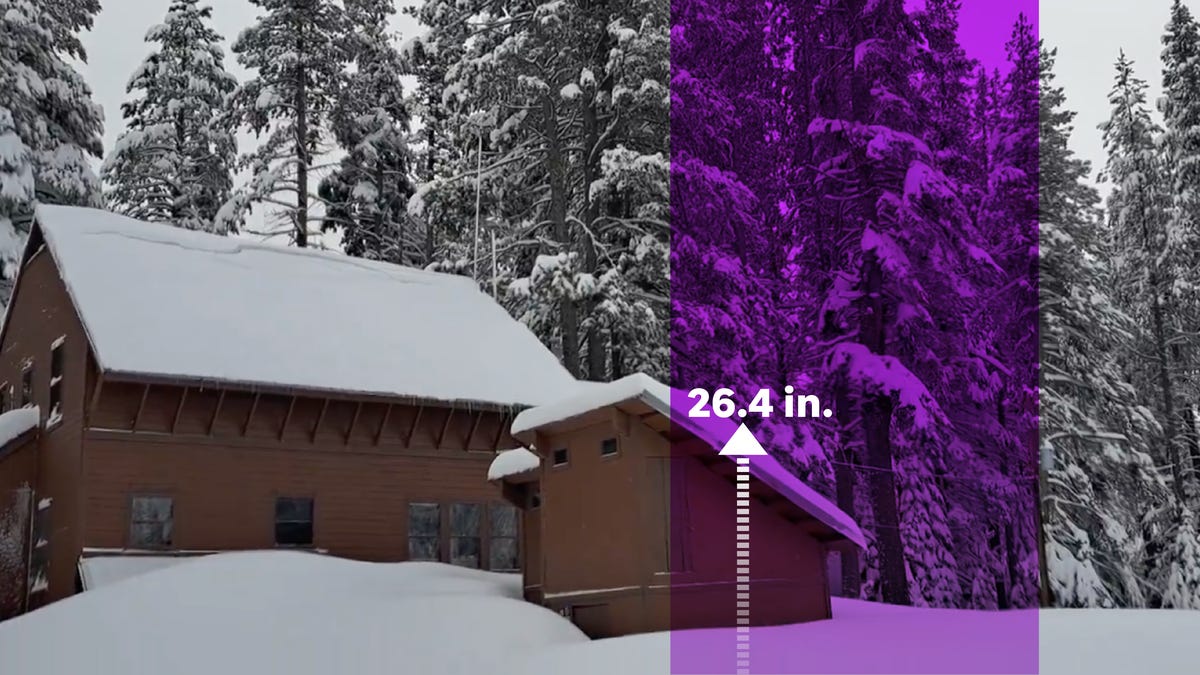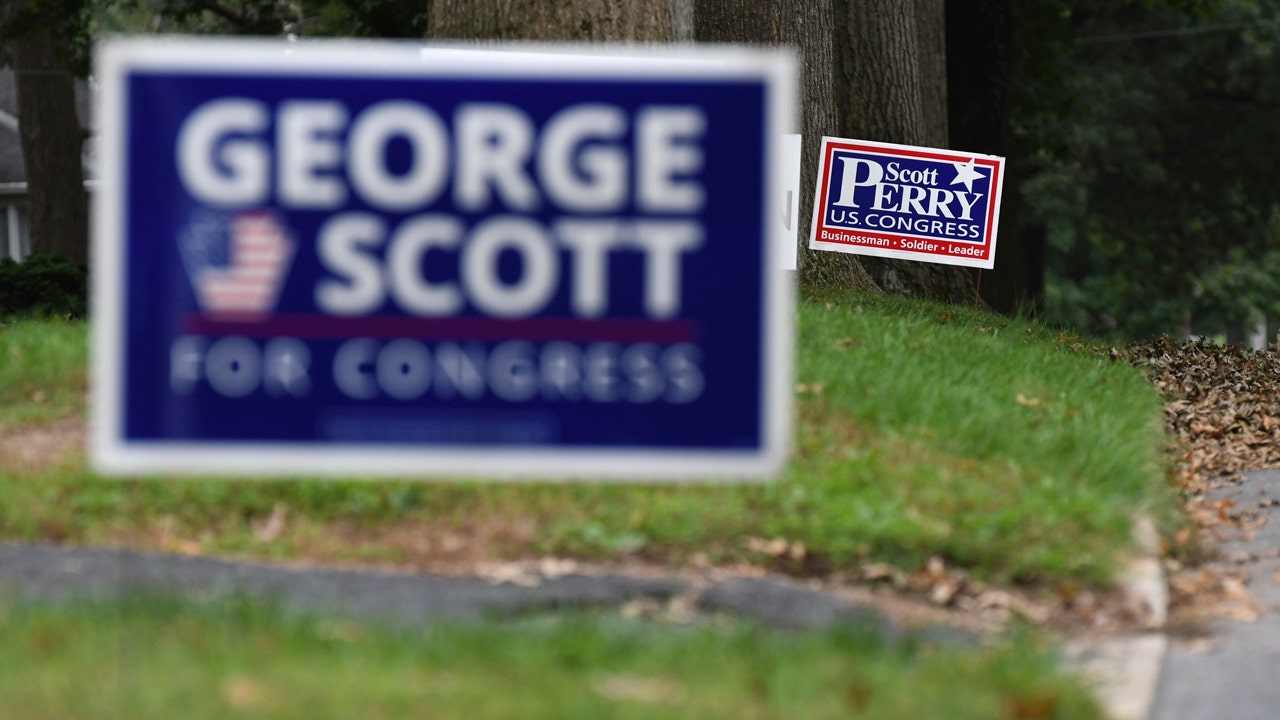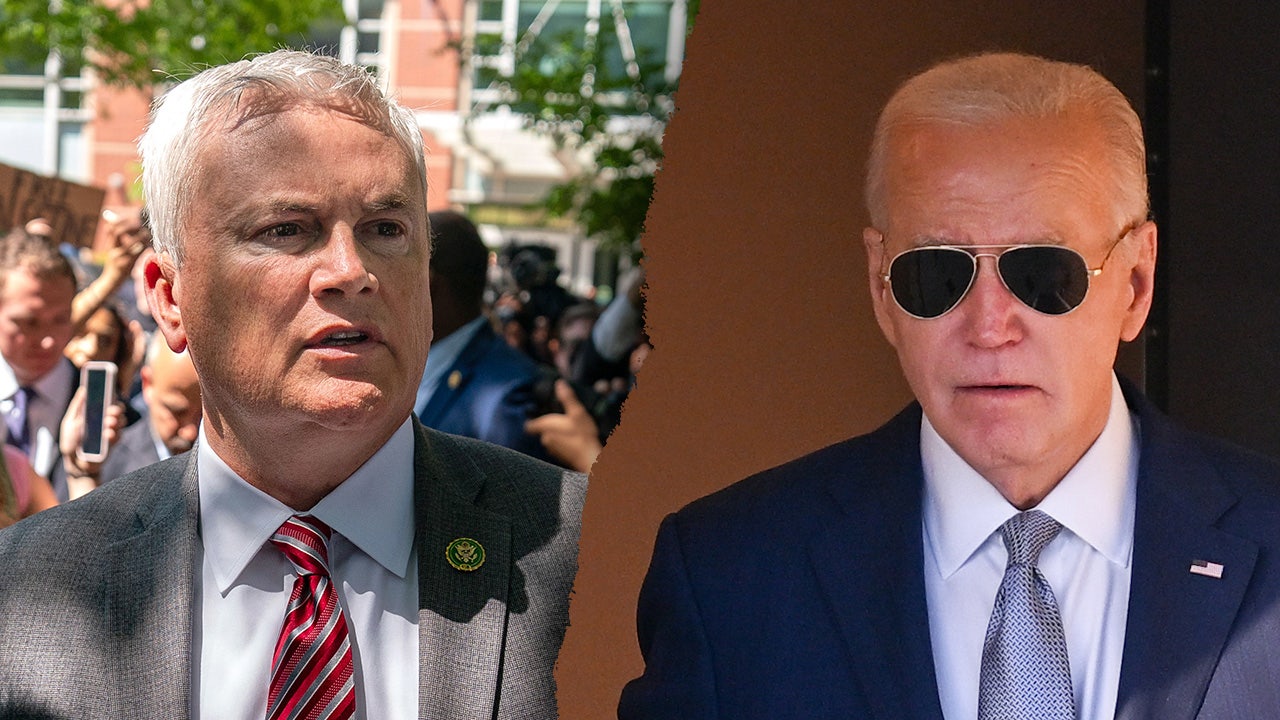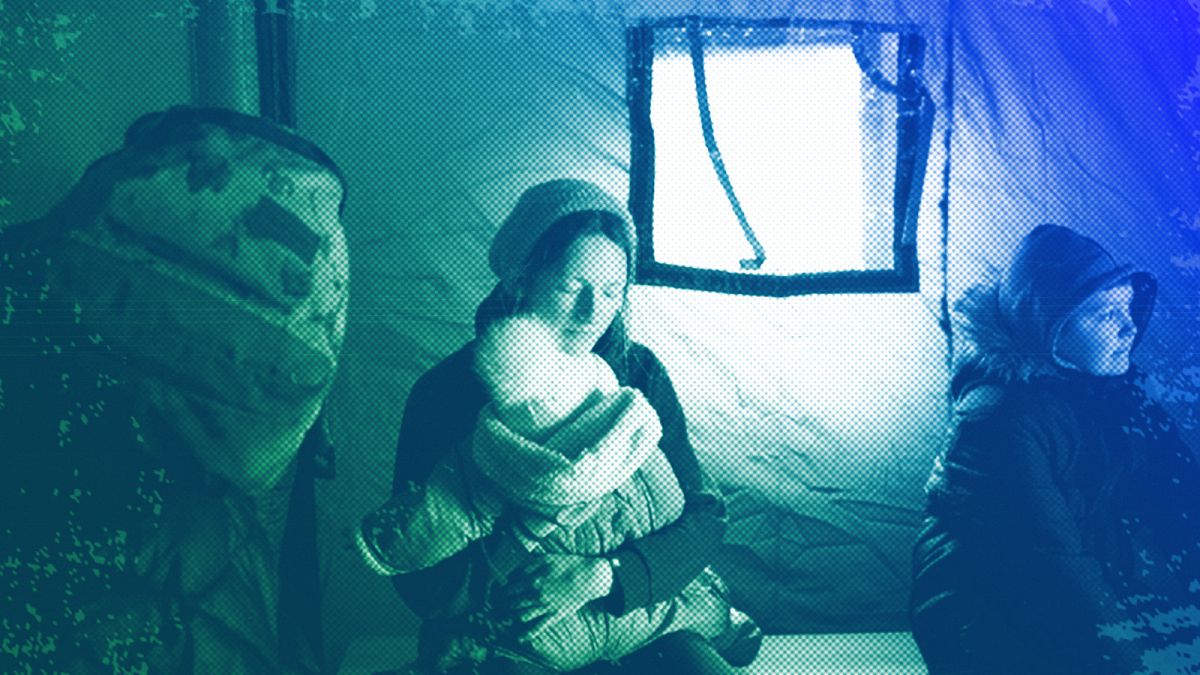California
California Steels Itself for a New Round of Flooding
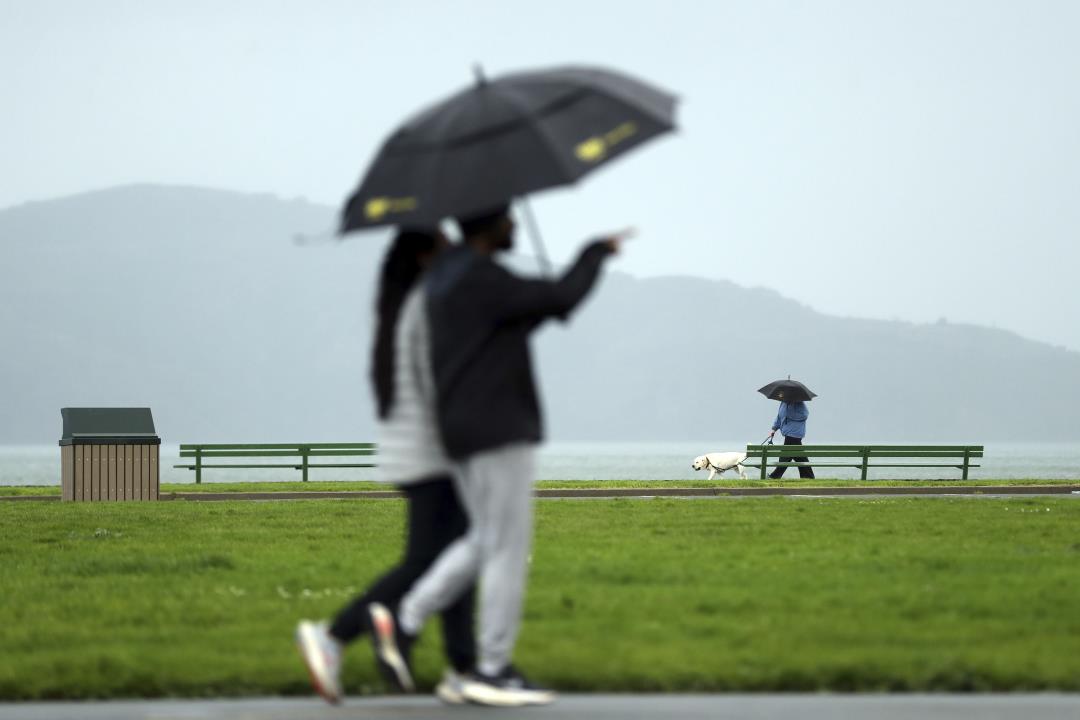
The latest in a series of wet winter storms gained strength in California early Monday, with forecasters warning of possible flooding, hail, strong winds, and even brief tornadoes as the system moves south over the next few days. Gusts topped 30mph in Oakland and San Jose as a mild cold front late Saturday gave way to a more powerful storm on Sunday, said meteorologist Brayden Murdock with the National Weather Service office in San Francisco. “The winds are here and getting stronger, and the rains will follow quickly,” he said Sunday afternoon, per the AP. California’s central coast is at risk of “significant flooding,” with up to 5 inches of rain predicted for many areas, per the weather service. Isolated rain totals of 10 inches are possible in the Santa Lucia and Santa Ynez mountain ranges as the storm heads toward greater Los Angeles.
Thunderstorms in valleys around the state capital on Monday could bring “brief tornadoes, large amounts of small hail, heavy rain, lightning, and gusty winds,” the weather service office in Sacramento warned on X. The latest storm is expected to move through more quickly than the devastating atmospheric river that parked itself over Southern California earlier this month, turning roads into rivers, causing hundreds of landslides, and killing at least nine people. “It’s not the ideal setup for an atmospheric river, but it does have some of the characteristics,” including a band of subtropical moisture bringing up the rear of the storm, Murdock said. “Otherwise it’s just a cold front.” But it’s a cold front strong enough to cause problems, including flash flooding and power outages, forecasters said. Flood watches and warnings were issued in coastal and mountain areas up and down the state.
Rainfall will be widespread even in the mountains, but several feet of snow is possible at elevations above about 6,800 feet across the Sierra Nevada, the weather service said. Motorists are urged to avoid mountain routes. “Consider completing Sierra travel during the day Sunday, or rescheduling to later next week,” said the weather service office in Reno, Nevada. The office issued a backcountry avalanche watch for the greater Lake Tahoe area and the eastern Sierra in Inyo and Mono counties. The California Governor’s Office of Emergency Services activated its operations center Saturday and positioned personnel and equipment in areas most at risk.
(More California stories.)

California
California has a multibillion-dollar budget deficit. Here's what you need to know
SACRAMENTO, Calif. (AP) — California has a huge budget problem that could force thorny decisions from Democratic leaders who enjoyed a more than $100 billion surplus just three years ago.
This is the second year in a row the nation’s most populous state is facing a multibillion-dollar shortfall. State revenues have continued to fall amid increasing inflation and a slowdown in the state’s usually robust technology industry.
Democratic Gov. Gavin Newsom on Friday announced his plan to address the deficit in the state’s budget. The release of his plan kicks off a budget negotiation marathon with Democratic lawmakers, who hold supermajorities in both chambers.
Newsom and lawmakers have until June 15 to pass a budget, or lawmakers don’t get paid.
HOW BIG IS THE BUDGET?
Newsom proposed a $288 billion spending plan on Friday for the fiscal year that starts July 1. That is well below the nearly $311 billion budget he signed into law last year. But it is still by far the largest of any state in the country. New York recently passed a $237 billion budget, and Texas and Florida spend far less annually.
WHAT ABOUT THE DEFICIT?
It’s complicated. Newsom announced on Friday a $26.7 billion deficit, but it’s really closer to $45 billion. That’s because Newsom didn’t include roughly $17.3 billion worth of actions he and lawmakers already agreed on. Those included a cut of $3.6 billion in primarily one-time funding to some school, welfare and climate programs. The plan also delays and defers about $5.2 billion in spending for various programs, including $1 billion to fund rail and public transit systems.
WHY DOES THE DEFICIT MATTER?
California’s constitution requires lawmakers and the governor to balance the budget — meaning the state can’t spend more money than it has. That means they have to either find more money by raising taxes, which Newsom doesn’t want to do, or find ways to cut, shift or delay spending. Newsom’s proposal focuses mostly on cuts, but it will also dip into reserve funding.
WHAT ARE THOSE CUTS?
Newsom proposed cuts across 260 state programs. Here are some of the highlights:
1. Eliminating 10,000 vacant state worker jobs for a saving of $762 million. Newsom didn’t immediately provide a list of all the jobs.
2. Clawing back $6.7 billion previously set aside to pay doctors more to see poor patients and immigrants.
3. Shaving off nearly 8% in operating costs to almost all state agencies through actions like getting rid of landlines in state offices and evaluating printing needs.
4. Cutting $2 billion from broadband initiatives to pursue cheaper options
5. Closing housing units with 4,600 beds across 13 state prisons to save $81 million.
6. Reducing funding for homelessness and housing initiatives by nearly $1.2 billion, including $474 million from an anti-foreclosure program to preserve existing affordable housing.
7. Reducing $500 million in water storage funding. He didn’t offer specifics on how that would be applied.
8. Shutting down an in-home service care program that serves 14,000 low-income, undocumented immigrants with disabilities for a savings of $94.7 million
9. Cutting roughly $2 billion from six education programs, including $550 million from an initiative to upgrade preschool and kindergarten facilities and $510 million in scholarships for middle class college students pursuing a teaching credential.
10. Eliminating $352.5 million in funding for state and local public health and $189.4 million from mental health services fund.
HOW ABOUT TAX INCREASES?
Newsom has repeatedly said he could balance the budget without raising taxes. But his proposal calls for the suspension of the widely used net operating loss tax deduction for businesses the following fiscal year, which some are seeing as a tax increase.
He is also increasing the tax on managed care organizations, the private companies that contract with the state to provide Medicaid benefits.
California
How are California lawmakers tackling housing and homelessness this year?

Could reclassifying who is considered to be very low-income get more vulnerable people off the streets?
That’s what some lawmakers are saying as the state continues to face a homelessness crisis that only seems to have grown worse despite tens of billions of taxpayer dollars being spent trying to alleviate the problem.
According to the 2023 point in time count released in December, which details the nation’s homeless population on a single night, more than 180,000 people in California were experiencing homelessness, a roughly 6% increase from the prior year. Between a longer period of time, 2007 to 2023, California saw the largest absolute increase in the number of people experiencing homelessness, 30.5%.
And this week, Orange County unveiled its latest point in time count, which revealed a 28% increase from the previous count in 2022, despite the county upping the dollar amount allocated towards addressing homelessness.
The county reported 7,322 people approached in January said they were experiencing homelessness. The last count in 2022 tallied 5,718 people either living on the streets in Orange County or staying in shelters. Of those surveyed this year, 328 were veterans, 308 were young adults between 18 and 24 years old and 869 were seniors ages 62 or older.
So what are state legislators doing to tackle this issue in Sacramento this year, besides the usual allocation of funding for existing programs?
For one, a bill from by San Diego Assemblymember Chris Ward and co-authored by Sen. Catherine Blakespear, D-Encinitas — and recently backed by Gov. Gavin Newsom — would reclassify who is considered to be on the very low end of the income scale, which Newsom said would better equip local jurisdictions to meet the housing needs of a greater number of their population.
While the state-mandated Regional Housing Needs Allocation process categorizes those earning at or below 50% of the median income as very low income, the legislation would break out that group into three categories: Individuals earning between 30-50% of the median income would be classified as very-low income, 15-30% as extremely low-income and 0-15% as acutely low-income.
The RHNA is a process by which local governments determine the housing needs of a specific community, including the amount of new homes that have to be built and the affordability of those homes.
Being more specific about who falls under which income category will require local governments to include acutely low-income households in their housing plans as well as rezone a development site if it is not suited to fully accommodate for the acutely low- and extremely low-income households.
“Far too often, we’re attempting to address the issue of homelessness without the complete picture,” Ward said, adding that his bill would “ensure that our most vulnerable residents are included into the Regional Housing Needs Allocation so we can recognize and plan for the housing needs of those earning the lowest incomes in our state.”
Blakespear introduced similar legislation for the 2023-24 legislative session that seeks to require cities and counties to provide housing for people experiencing homelessness by including them in their zoning plans. The bill is still awaiting to be assigned to a committee.
Here are four other ways state legislators are working on housing issues this year.
Housing subsidies
Under legislation introduced by Assemblymembers Rick Zbur, D-Los Angeles, and Sharon Quirk-Silva, D-Fullerton, the state would establish a program to provide funding for counties to give housing subsidies to low-income people who meet at least one of the following criteria:
• A former foster youth who qualifies for the state’s independent living program,
• An adult 55 and older,
• An adult with a disability,
• An individual experiencing unemployment,
• An individual experiencing homelessness,
• A veteran, or
• An incarcerated individual who is likely to be unhoused after being released.
If passed, a two-year pilot program would be established in eight California counties, including Orange County, by Jan. 1, 2026.
Support for homeless students
Another bill introduced by Quirk-Silva aims to ensure resources for California’s foster and unhoused youth, including tutoring and college financial aid services, are readily available for the students who need them.
The legislation would create a new level of accountability for school districts, charters and county education offices to identify homeless students. It also would urge more collaboration between local educational agencies and programs that serve foster or unhoused youths.
“The whole goal here is to continue that liaison between foster care students and the local agencies,” she previously said.
Development in the Coastal Zone
One area of California where a lack of affordable housing is most apparent is the coastline, specifically the Coastal Zone, a geographic region that encompasses both land and water areas along the length of the California coastline from the Oregon border to the Mexico border, according to the California Coastal Commission.
That zone is exempt from California’s density bonus law, which allows developers to build additional homes above the dwelling units per acre allowed by the specific jurisdiction in exchange for reserving a percentage of the project for affordable homes.
Legislation from Assemblymember David Alvarez, D-San Diego, aims to do away with that exemption. Far less housing has been built in the state’s coastal areas than people demand, which upped the cost of housing in those areas and spilled over to inland regions, according to the Legislative Analyst’s Office.
“Wealthier areas along California’s coast need to do their part in building more housing,” Alvarez said. “The current law prevents housing along with denying access to California’s coast to the average citizen.”
Financial headwinds
Billions of dollars are spent annually in California in an attempt to put a roof over the heads of the unhoused and connect them to vital resources they need.
But a recent audit of those dollars found that the state has failed to adequately track whether that massive spending has been working, which has led to criticism of the administration from state legislators on both sides of the aisle.
A number of bills this year call for better accountability of state spending related to homelessness, including AB 2056, which would require the Department of Finance to create a public internet portal before July 1, 2025, that tracks and reports that spending.
Another bill aims to create a working group of all departments and agencies that receive homelessness funding and task the group with determining how to consolidate into one so that funding is no longer split across multiple state departments and agencies.
During a two-hour hearing this week of the Assembly’s Budget Subcommittee on Accountability and Oversight, legislators demanded data from several Newsom administration officials on the cost-effectiveness of major homelessness programs. But the officials who testified during the hearing said they could not present that data at this time.
Assemblymember Avelino Valencia, D-Anaheim, who chairs the committee, said the hearing is a testament to the urgency of the need to address the issue.
“Speed, efficiency, responsibility and the collaboration component is going to be key between our tribes, between our local, the county, the state, and of course, the state departments to ensure that we’re actually addressing the issue now and not kicking this can down the road any further,” he said.
Kaitlyn Schallhorn and Destiny Torres contributed to this report.
California
This new California bill could ban self-checkouts at grocery, retail drug stores

A proposed Senate bill would prohibit self-checkout lanes for customers at all California grocery and retail drug stores unless certain conditions are met. It’s all in an effort to combat theft.
“I think self-checkouts are pretty good in terms of efficiency,” said David Kisieu, Cal Poly student. “If I don’t have a lot of stuff, I don’t really want to wait and deal with a lot of people. I just scan something really quickly and leave.”
Senate Bill 1446, proposed by state Sen. Lola Smallwood-Cuevas of Los Angeles, stores would be able to offer self-checkout lanes if the checkouts are limited to 10 items or less and at least one manual checkout lane is staffed by an employee.
“If I’m going to use self-checkout, I’m going to use 10 items or fewer anyways, so if it’s a way to deter theft, sure,” Kisieu said.
“It kind of keeps it fair for people because if you’re going to have more than 10 items it’s going to take you a minute,” said Brendan Smith, Cal Poly student. “It defeats the whole purpose of helping mitigate the lines because then there’s just going to be another big line over there.”
In a letter to Smallwood-Cuevas, the California Chamber of Commerce said in part it “forces retailers to police the number of items going through self-checkout lanes which could create a point of friction between a customer and a retail employee.”
The bill also states if self-checkouts are offered, the employee monitoring them should not have any other duties and cannot monitor more than two lanes at a time.
“I think one person manning it makes sense because if you do that it’s going to take away cashiers from the other regular checkouts and that’s probably going to make it a bigger traffic jam,” Smith said.
“It seems to be working at this point they’ve got one that monitors six, so it works,” said Luke Alexander, Morro Bay resident.
David Kisieu is optimistic about the bill. “I think at the end of the day theft is getting out of hand, especially in California,” he said. “Whatever works, works, who knows if it’s going to work but it doesn’t hurt to try.”
KSBY reached out to Senator Smallwood-Cuevas’ office for comment but has not received a response yet.
-

 Politics1 week ago
Politics1 week agoThe White House has a new curator. Donna Hayashi Smith is the first Asian American to hold the post
-

 News1 week ago
News1 week agoPolice enter UCLA anti-war encampment; Arizona repeals Civil War-era abortion ban
-

 Politics1 week ago
Politics1 week agoAdams, NYPD cite 'global' effort to 'radicalize young people' after 300 arrested at Columbia, CUNY
-

 World1 week ago
World1 week agoTurkish police arrest hundreds at Istanbul May Day protests
-

 News1 week ago
News1 week agoVideo: Police Arrest Columbia Protesters Occupying Hamilton Hall
-
)
) Movie Reviews1 week ago
Movie Reviews1 week agoThe Idea of You Movie Review: Anne Hathaway’s honest performance makes the film stand out in a not so formulaic rom-com
-

 News1 week ago
News1 week agoSome Republicans expected to join Arizona Democrats to pass repeal of 1864 abortion ban
-

 Politics1 week ago
Politics1 week agoNewsom, state officials silent on anti-Israel protests at UCLA


